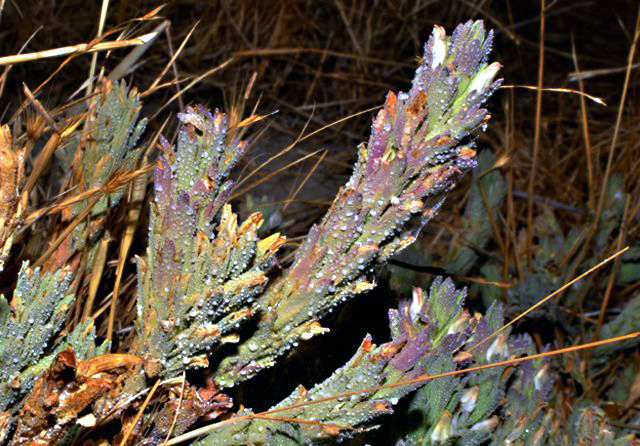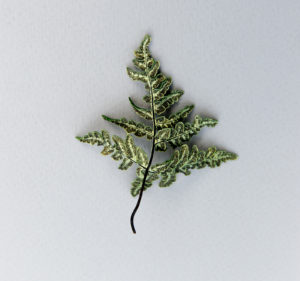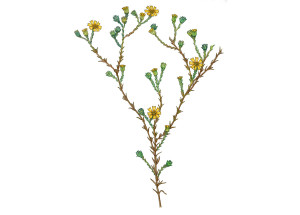In the highly alkaline, salty soils of Springtown Preserve near Livermore, few annuals can make it through the hot, dry summer months. But the Palmate bracted bird’s-beak has found a way.
The member of the snapdragon family (Cordylanthus) secretes out salt, which collects as crystals on its leaves. A deep root system allows it to go on growing in the hot, dry months after most other annuals have died.
Still, habitat destruction and the encroachment of non-natives have reduced the California native to just six remaining locations. Springtown Preserve has 80 percent of the endangered plant’s genetic diversity.
“The preserve is the No. 1 botanical hotspot in the East Bay,” said Lech Naumovich, director of the Golden Hour Restoration Institute.

Naumovich led a team of volunteers out to Springtown earlier this month to survey the number of Palmate bracted bird’s beak. Using GPS equipment to survey roughly half the area, the team found 16 Palmates and nine Hispid bird’s beak, a close relative.

Naumovich said non-native grasses are taking hold in Springtown preserve and changing the soil composition to make it less saline, imperiling the Palmate’s survival. The grasses are also killing off nesting sites for ground nesting bees, which are the Palmate’s main pollinator.
Springtown preserve is owned by the city of Livermore and is open to the public. Visitors should tread lightly, stay on paths, and avoid stepping on the Palmate and other sensitive plant species.

Christine Kelly is a Bay Nature editorial intern.






